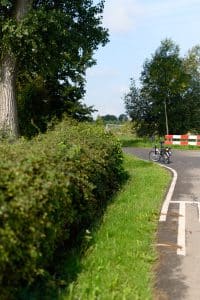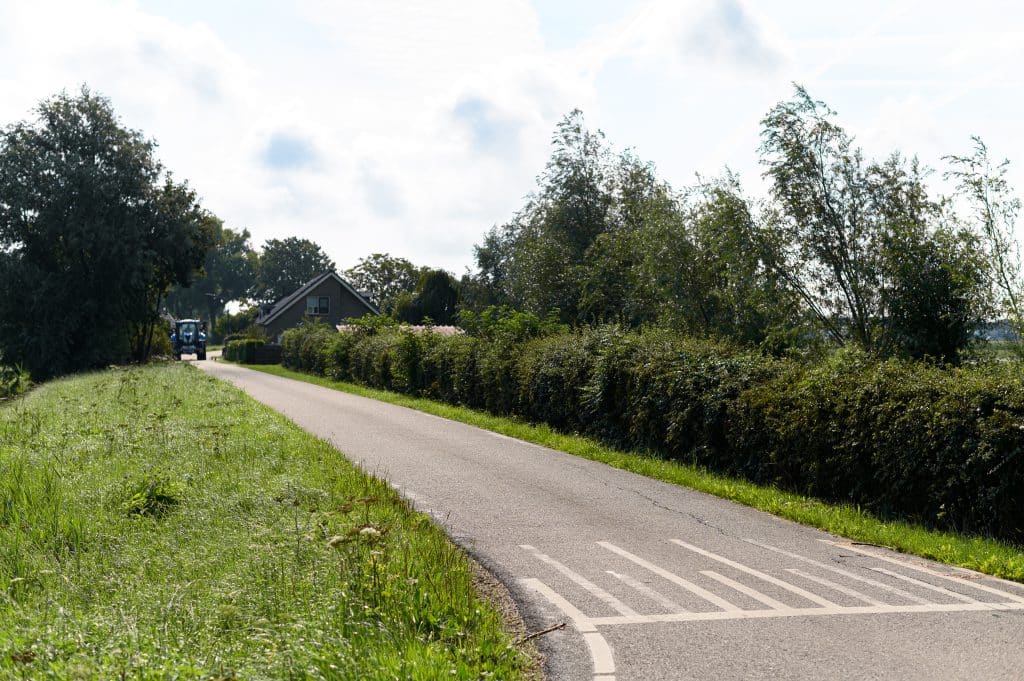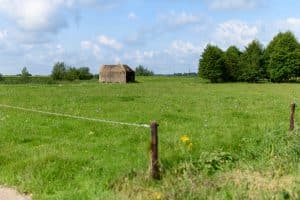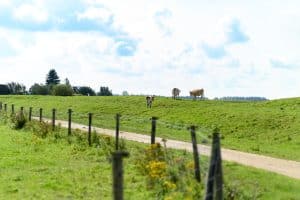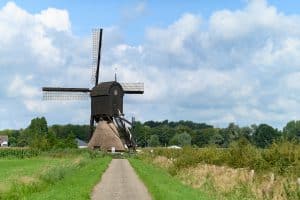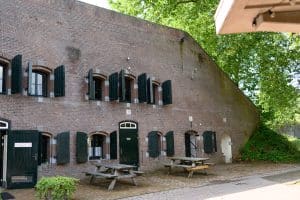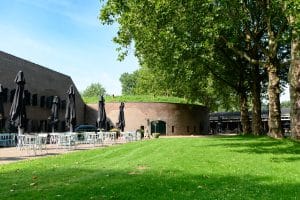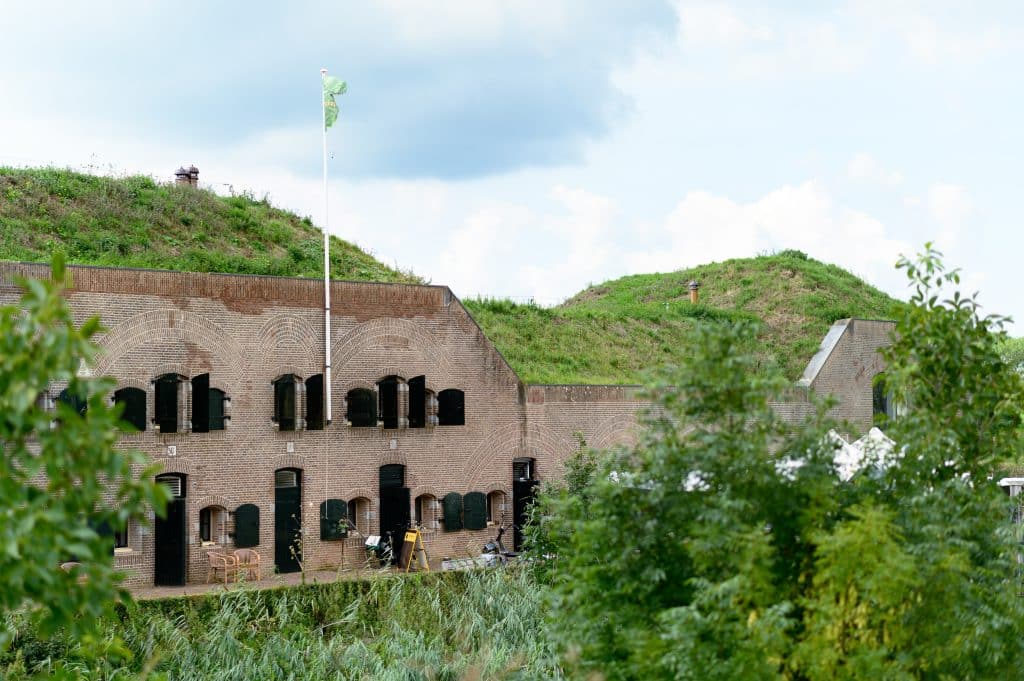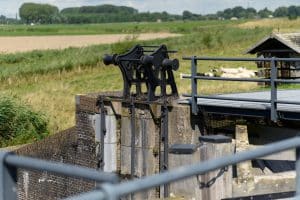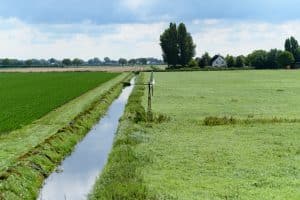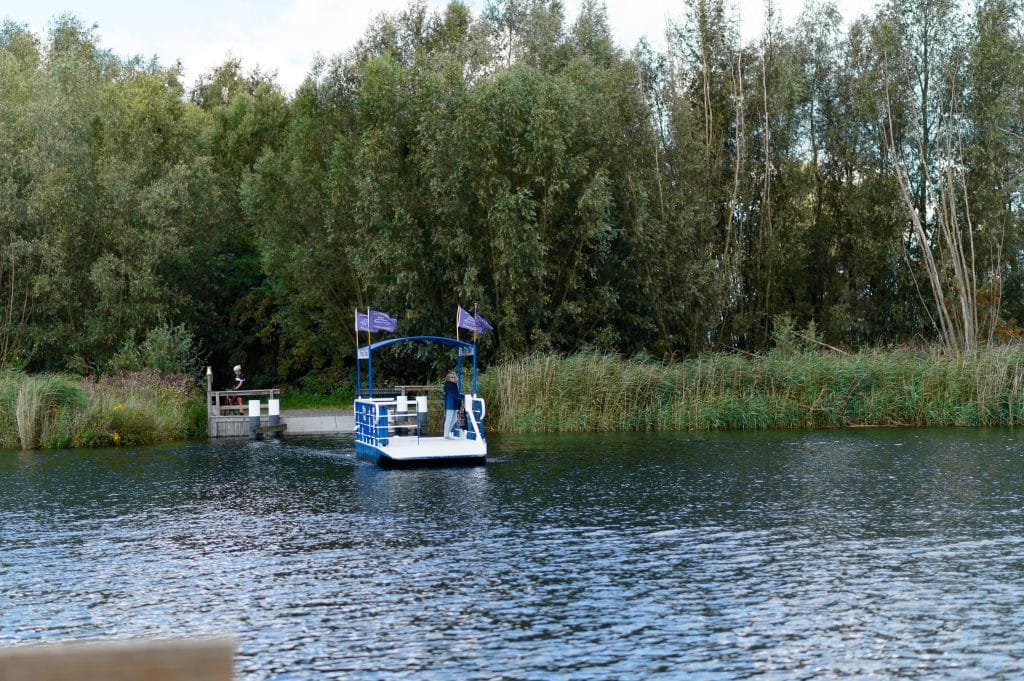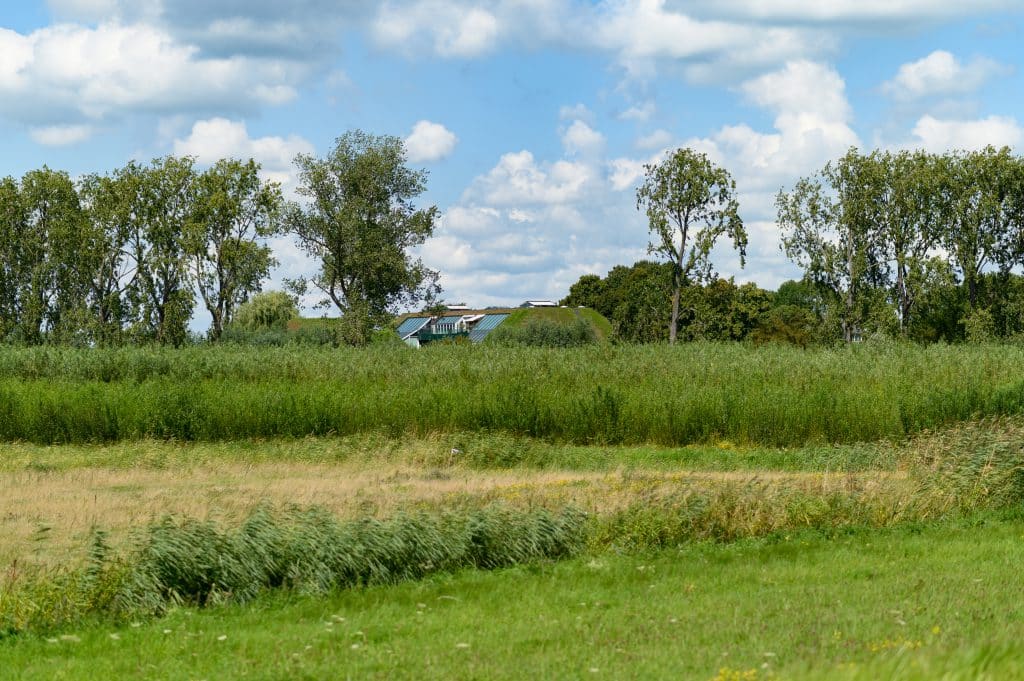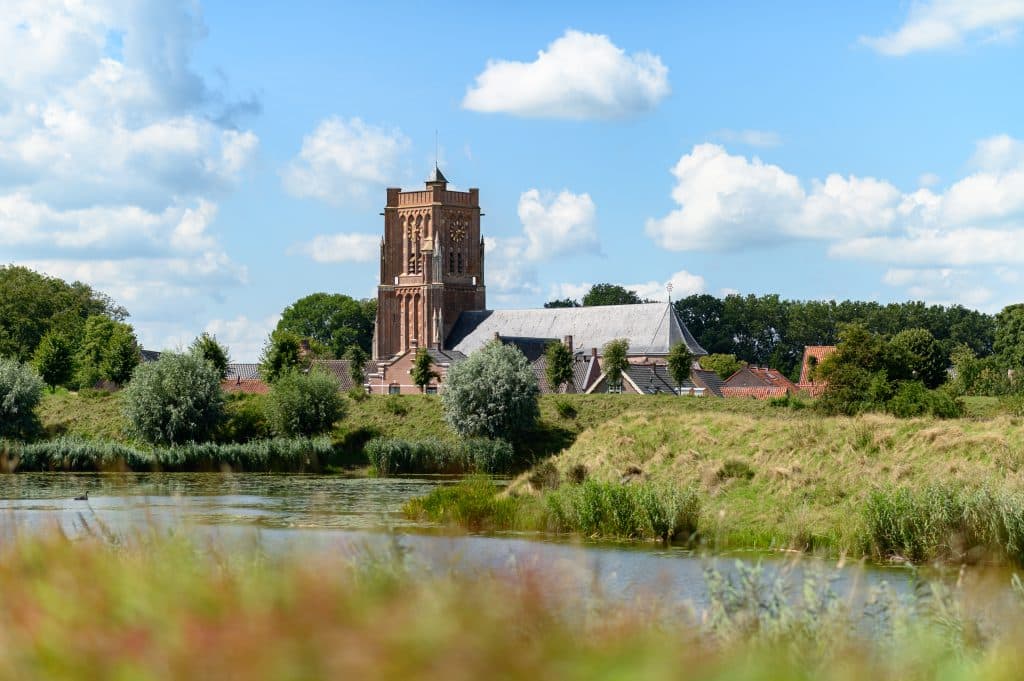I had made some notes at home with what I wanted to see. The Papsluis is thickly underlined at the top. But before I get there, the route goes past Fort Bakkerskil. This fort was erected to defend the Papsluis and it is quite close to Fort Altena.
The sky is suddenly quite involved and just as I step under the awning in the courtyard, it begins to drizzle. What timing! To my surprise, a small café does open here. The temptation is too great and I fall for a delicious cherry crumble cake with coffee. There are also fresh smoothies available for those who want a more healthier option. Before cycling on, I chat with the manager. "We're open as long as it's dry," he says. "With rain, there's no one there and there's no point."






